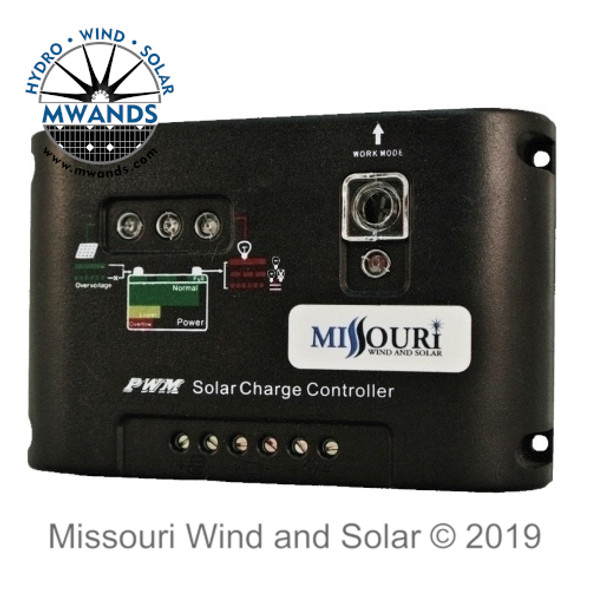Missouri Wind and Solar
Digital 880 Amp Charge Controller with Divert Relay & LED Meter for Wind and Solar
- SKU:
- 880ECCDIG
Description
Digital 880 Amp Charge Controller with Divert Relay & LED Meter for Wind and Solar
The 880 amp dual relay charge controller with divert relay can be used with our diversion dump loads (dump load sold separately). Some diversion loads include, wire wound resistor style, DC water heating elements, our room heaters, or simple plug in grid feed inverters.
This 880 Amp 10,000 Watt diversion controller features an LED display to let you know the battery voltage.
Please note that this charge controller is not compatible with lithium batteries.
Charge Controller Features
- Connect multiple turbines and solar panels up to 880 amps worth at the same time!
- Max continuous solar amperage in disconnect mode is 200 amps.
- Maximum amperage in divert mode is 880 amps.
- This is a huge hybrid wind and solar charge controller.
- High amp isolated circuit board has the power to energize two 440 amp relays. This eliminates the need to buy another charge controller to handle your system.
- Use for wind or solar or both at the same time! Also use for hydroelectric, solar or both.
- User changeable settings -- Several controllers on the market only let you set the dump level!
- Dual (2) Microprocessor controlled -- Very stable and very accurate
- Multiple user changeable settings, and trip points for many various system requirements and applications- You can change the dump point voltage level, end of dump voltage level, length of time in divert mode when end dump point voltage is reached (between 0 to 999 seconds, or 0 to 999 minutes)
- Isolated Electronics Protection - Almost impossible to accidentally connect wind or solar directly to the circuit board.
- High amp rating - 880 amps
- Battery Status Digital LED display- Lets you know your battery's actual voltage!
- Green LED on board lets you know it's in dump mode
- Plug & Play - Long leads for easy termination to your 12 volt battery or battery bank.
- Can divert the charging source from the batteries to the load, or dump both the batteries along with the charging source.
- You can connect both wind and solar at the same time
- Reverse polarity protection
- Ultra low power consumption even with the voltmeter on (almost negligible). You can even set the voltmeter to turn off after inactivity.
- On board relay- Isolates electronics from back voltage spikes from 2 large 440 amp relays. This is important to get the longest life out of the electronics.No one else has this!
- Custom built relay with REAL plated anti seizing contacts- This is no ordinary relay solenoid. Don't ruin your entire system with cheap knockoffs designed for profit only. WE simply build it to last!
- Designed, assembled and quality checked in Missouri USA using global parts.
- 1 Year Manufacturer Warranty
About load diversion:
The basic operating philosophy of a diversion controller is quite simple. Monitor the battery voltage, and if it should rise to a predetermined level, connect a diversion load, of sufficient size, to the battery or energy source to prevent the battery voltage from increasing any further. This is a very simple, yet very effective way of preventing battery overcharging. All alternate energy systems should have some form of battery overcharge protection.
Several schools of thought on the subject:
- The source of power (wind turbine, solar panels etc.) -- should remain connected to the batteries while the dump is active.
- The source should be diverted to the load directly and disconnected from the batteries. We happen to believe that is far better to leave the wind turbine connected to the batteries at all times.
Why? When you remove the battery level voltage from a wind turbine and send it's power directly to a load, then it sees for all practical purposes a short circuit (depending on the resistance of the load and lead wires.) This may cause the turbine blades to slow dramatically and in some cases bring it to a halt. This braking action can cause heat build up in the stator if it is repeated every few seconds or so (if the battery is just a little over the top). When you allow the turbine to see the batteries, along with the load, the turbine remains more within it's design realm -- always a good thing. The internal relays are configured to dump the batteries along with the source, but if you desire to disconnect the source from the batteries and send it to the load directly, simply utilize the N/C contacts of the relays as well.
Product Instruction Manuals:










